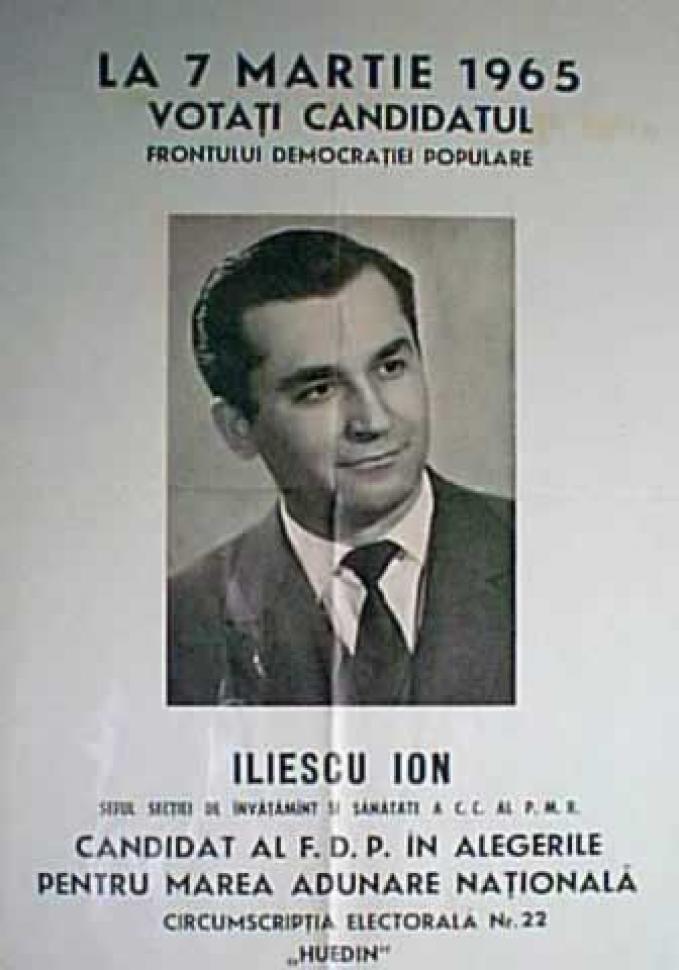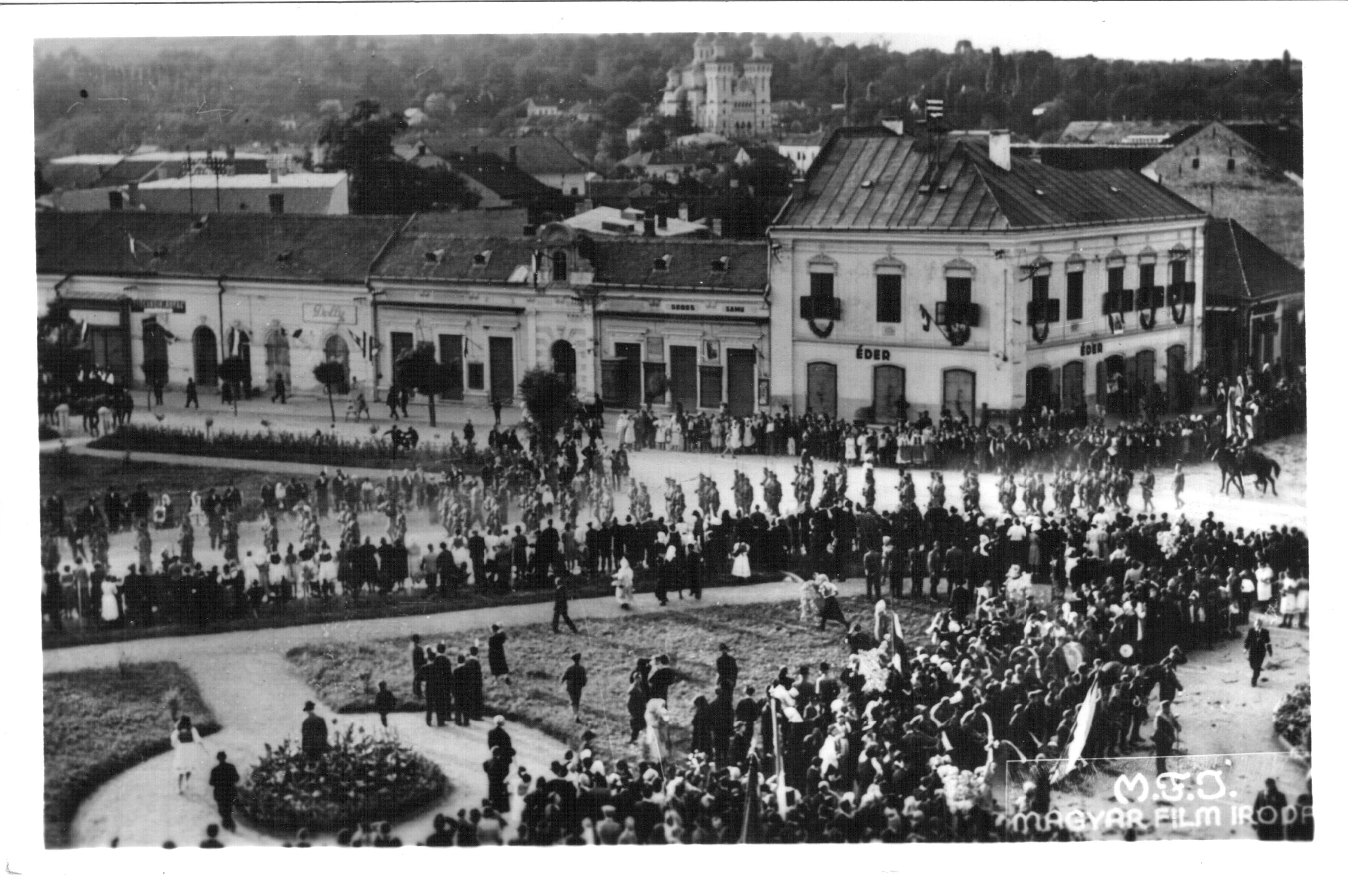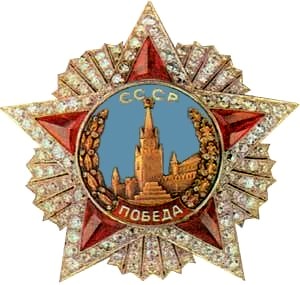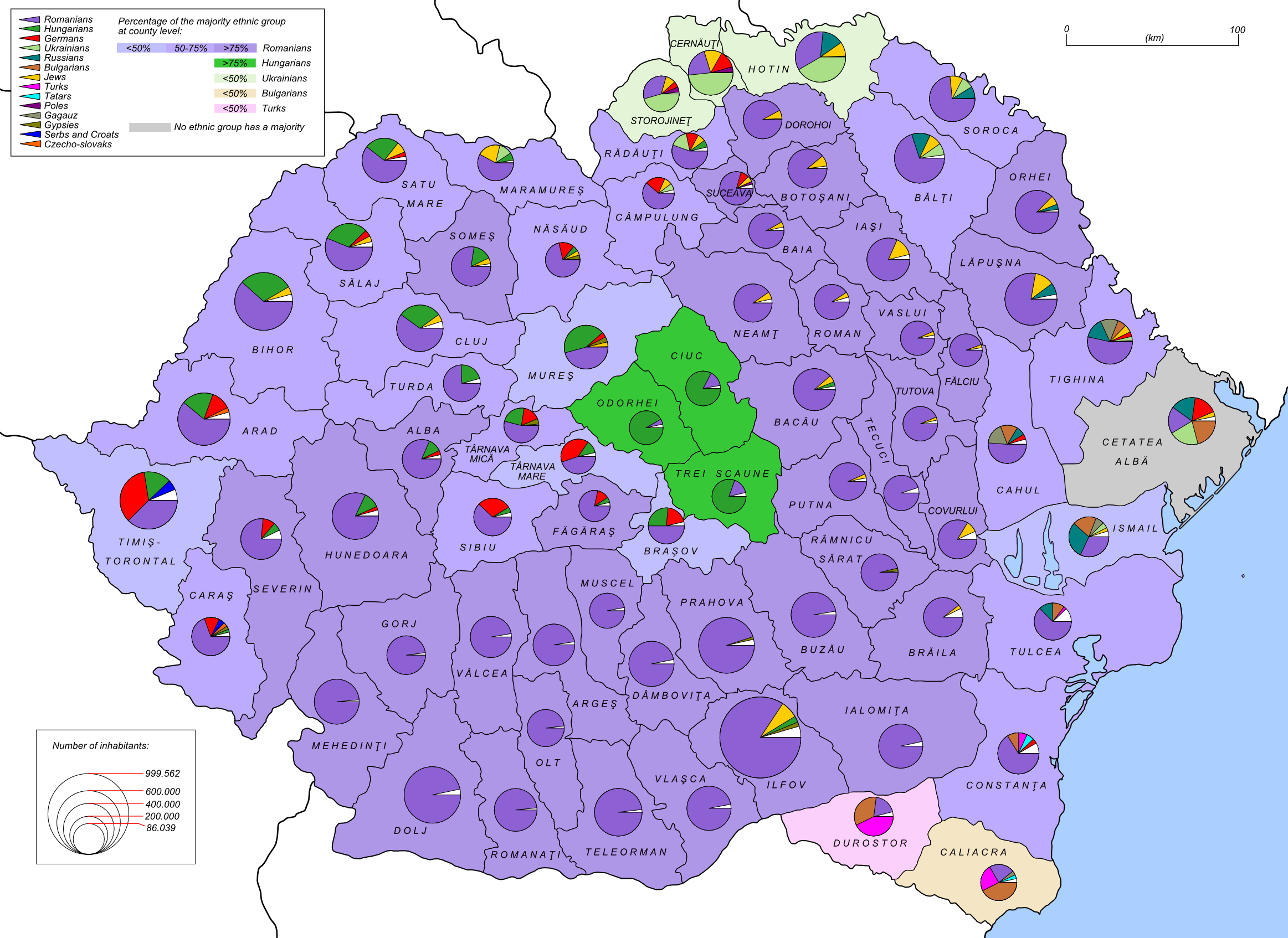|
Bucharest People's Tribunal
The two Romanian People's Tribunals (), the Bucharest People's Tribunal and the Northern Transylvania People's Tribunal (which sat in Cluj) were set up by the post-World War II government of Romania, overseen by the Allied Control Commission to try suspected war criminals, in line with Article 14 of the Armistice Agreement with Romania which said: "The Romanian Government and High Command undertake to collaborate with the Allied (Soviet) High Command in the apprehension and trial of persons accused of war crimes". References RICHR: Ch.12 - Trials of the war criminals, page 5 in at |
Cluj-Napoca
Cluj-Napoca ( ; ), or simply Cluj ( , ), is a city in northwestern Romania. It is the second-most populous city in the country and the seat of Cluj County. Geographically, it is roughly equidistant from Bucharest (), Budapest () and Belgrade (). Located in the Someșul Mic river valley, the city is considered the unofficial capital of the Historical regions of Romania, historical province of Transylvania. For some decades prior to the Austro-Hungarian Compromise of 1867, it was the official capital of the Grand Principality of Transylvania. , 286,598 inhabitants live in the city. The Cluj-Napoca metropolitan area had a population of 411,379 people, while the population of the peri-urbanisation, peri-urban area is approximately 420,000. According to a 2007 estimate, the city hosted an average population of over 20,000 students and other non-residents each year from 2004 to 2007. The city spreads out from St. Michael's Church, Cluj-Napoca, St. Michael's Church in Unirii Square, C ... [...More Info...] [...Related Items...] OR: [Wikipedia] [Google] [Baidu] |
Albert Wass
Count Albert Wass de Szentegyed et Czege (; January 8, 1908 – February 17, 1998) was a Hungarian nobleman, forest engineer, novelist, poet, member of the Wass de Czege family. Wass was born in Válaszút, Austria-Hungary (now Răscruci, Cluj County, Romania) in 1908. In 1944 he fled from Hungary, and then joined the fleeing forces of the Third Reich and ended up in Germany, then emigrated to the U.S. after World War II. He was condemned as a war criminal by the Romanian People's Tribunals, however, United States authorities refused to extradite Wass to Romania claiming the lack of solid evidence. The works of Albert Wass first gained recognition within Hungarian literature from Transylvania in the 1940s. In 1944 he moved to Germany and later in 1952 to the United States, and lived there until his 1998 death in Astor Park, Florida. During the communist regime, his books were banned both in Hungary and in Romania. Part of his works was published in Hungary after the change ... [...More Info...] [...Related Items...] OR: [Wikipedia] [Google] [Baidu] |
Radio Free Europe
Radio Free Europe/Radio Liberty (RFE/RL) is a media organization broadcasting news and analyses in 27 languages to 23 countries across Eastern Europe, Central Asia, the Caucasus, and the Middle East. Headquartered in Prague since 1995, RFE/RL operates 21 local bureaus with over 500 core staff, 1,300 freelancers, and 680 employees. Nicola Careem serves as the editor-in-chief. Founded during the Cold War, RFE began in 1949 targeting Soviet empire, Soviet satellite states, while RL, established in 1951, focused on the Soviet Union. Initially funded covertly by the Central Intelligence Agency, CIA until 1972, the two merged in 1976. RFE/RL was headquartered in Munich from 1949 to 1995, with additional broadcasts from Portugal's Glória do Ribatejo until 1996. Soviet authorities jammed their signals, and Second World, communist regimes often infiltrated their operations. Today, RFE/RL is a private 501(c)(3) corporation supervised by the United States Agency for Global Media, which ... [...More Info...] [...Related Items...] OR: [Wikipedia] [Google] [Baidu] |
Ion Iliescu
Ion Iliescu (; born 3 March 1930) is a Romanian politician and engineer who served as the second president of Romania from 1989 until 1996 and from 2000 until 2004. Between 1996 and 2000 and also from 2004 to 2008, the year in which he retired, Iliescu was a Senate of Romania, senator for the Social Democratic Party (Romania), Social Democratic Party (PSD), of which he is the founder and honorary president to this day. Iliescu joined the Romanian Communist Party (PCR) in 1953 and became a member of its Central Committee in 1965. Beginning with 1971, he was gradually marginalised by Nicolae Ceaușescu. He had a leading role in the Romanian Revolution, becoming the country's president in December 1989. In May 1990, he became Romania's first freely elected head of state. After a new constitution was approved by popular referendum, he served a further two terms, firstly from 1992 to 1996 and then secondly from 2000 to 2004, separated by the presidency of Emil Constantinescu, who def ... [...More Info...] [...Related Items...] OR: [Wikipedia] [Google] [Baidu] |
Treznea Massacre
The Treznea massacre occurred in the village of Treznea, Sălaj in north-western Transylvania on 9 September 1940, in the immediate aftermath of the Second Vienna Award, when Romania ceded Northern Transylvania to Hungary. The massacre was perpretated by Hungarian Army troops with aid from some locals; 93 ethnic Romanians and Jews were killed. The events On that day, instigated by the former landlord Francisc (or Ferenc) Bay, the 22nd Hungarian Border Guards Battalion "Debrecen", led by Lieutenant-Colonel Ákosy, made a detour from the Zalău– Ciumărna– Hida route to the "Măgura" area of the commune, which formerly belonged to Francisc Bay. The Hungarian troops entered the village at noon, under unclear circumstances fired at the locals, killing many of them and partially destroying the Orthodox church. The sources recorded that 87 Romanians and 6 Jews were killed, including the local Orthodox priest, Traian Costea, who was burned in his church, and the Romania ... [...More Info...] [...Related Items...] OR: [Wikipedia] [Google] [Baidu] |
The Holocaust In Romania
The Holocaust saw the genocide of Jews in the Kingdom of Romania and in Romanian-controlled territories of the Soviet Union between 1940 and 1944. While historically part of The Holocaust, these actions were mostly independent from the similar acts committed by Nazi Germany, Romania being the only ally of the Third Reich that carried out a genocidal campaign without the intervention of Heinrich Himmler's SS. Various numbers have been advanced by researchers for the lives lost in the genocide, with most estimates in the range of 250,000 to 380,000, to which can be added another 12,000 Romani victims. Another approximately 132,000 Jews from the Hungarian-controlled Northern Transylvania were killed during this period by the Nazis with the collaboration of the Hungarian authorities. Romania ranks first among Holocaust perpetrator countries other than Germany. Background In the first decades of the 20th century, antisemitic views increased in number and intensity in publications ... [...More Info...] [...Related Items...] OR: [Wikipedia] [Google] [Baidu] |
The Holocaust In Hungary
The Holocaust saw the dispossession, deportation and systematic murder of more than half of the Hungarian Jews, primarily after the German invasion of Hungary (1944), German occupation of Hungary in March 1944. Before that, several incidents took place, including Novi Sad raid, The Raid in 1942, the murders of the majority of Jews in Novi Sad and south-eastern Bačka. At the time of the German invasion, Hungary had a Jewish population of 825,000, the largest remaining in Europe, further swollen by Jews escaping from elsewhere to the relative safety of that country. The Prime Minister of Hungary, Hungarian Prime Minister Miklós Kállay had been reluctant to deport them. Fearing Hungary was trying to pursue peace with the Allies (which the diplomat secretly did in the September of 1943), Adolf Hitler ordered the invasion. New restrictions against Jews were imposed soon after Germany occupied Hungary on 19 March 1944. The invading troops included a ''SS-Sonderkommandos, Sonderkom ... [...More Info...] [...Related Items...] OR: [Wikipedia] [Google] [Baidu] |
Soviet Occupation Of Romania
The Soviet occupation of Romania refers to the period from 1944 to August 1958, during which the Soviet Union maintained a significant military presence in Socialist Republic of Romania, Romania. The fate of the territories held by Romania after 1918 that were incorporated into the Soviet Union in 1940 is treated separately in the article on Soviet occupation of Bessarabia and Northern Bukovina. During the Eastern Front (World War II), Eastern Front offensive of 1944, the Soviet Army occupied the northwestern part of Moldavia Second Jassy–Kishinev offensive, as a result of armed combat that took place between the months of April and August of that year, while Romania was still an ally of Nazi Germany. The rest of the territory was occupied after Romania changed sides in World War II, as a result of the King Michael's Coup, royal coup launched by King of Romania, King Michael I of Romania, Michael I on August 23, 1944. On that date, the king announced that Romania had unilaterally ... [...More Info...] [...Related Items...] OR: [Wikipedia] [Google] [Baidu] |
Romania During World War II
The Kingdom of Romania, under the rule of King Carol II of Romania, King Carol II, initially maintained Neutral country, neutrality in World War II. However, fascist political forces, especially the Iron Guard, rose in popularity and power, urging an alliance with Nazi Germany and its Axis powers, allies. As the military fortunes of Romania's two main guarantors of territorial integrity—French Third Republic, France and United Kingdom, Britain—crumbled in the Battle of France, the government of Romania turned to Germany in hopes of a similar guarantee, unaware that Germany, in Molotov–Ribbentrop Pact#Secret protocol, the supplementary protocol to the 1939 Molotov–Ribbentrop Pact, had already granted its blessing to Soviet Union, Soviet claims on Bessarabia, Romanian territory. In the summer of 1940, the USSR Soviet occupation of Bessarabia and Northern Bukovina, occupied Bessarabia and Northern Bukovina, severely weakening Romania and diminishing its international standin ... [...More Info...] [...Related Items...] OR: [Wikipedia] [Google] [Baidu] |
Rehabilitation Of War Criminals In Post-Communist Romania
After the fall of Communism in Romania, between 1995 and 2004, a number of war criminals were rehabilitated by the Romanian Supreme Court. The rehabilitation process was part of the general efforts made by Romania to distance itself from its Communist past, as those convicted were sentenced after the country fell under Soviet influence in the wake of World War II. However, as a former Axis country during the Second World War, these rehabilitation initiatives put Romania at odds with the West (the United States in particular), as the former was seeking to join NATO and EU. Thus, the number of acquittals was relatively small, and rehabilitation initiatives ceased altogether in 2004, after Romania joined NATO. Chronology On 8 May 1995, after the fall of Communism, 10 of the sentences pronounced by the "People's Tribunals" were overturned by the Supreme Court of Justice. They were part of the 14 war criminals convicted in the "Journalists' trial" of 1945. Only one of the ten, Pan M. ... [...More Info...] [...Related Items...] OR: [Wikipedia] [Google] [Baidu] |
Luduș Massacre
The Luduș massacre occurred in the village of Luduș (), in the Kingdom of Romania. Between 5 and 13 September 1944, on the outskirts of the village, the Royal Hungarian Army occupied the village and, with the help of natives, shot 15 Jews and 2 Romanians: Mihai Polac, Vilma Polac and their daughters Rozalia and Maria, Iosif Gluck and his daughter Rozalia, Mauriciu Fred, Ghizela Fred, Maria Kopstein, Adelca Izrael and the Haller sisters (Sarolta, Fani and Rozalia). The latter five were raped and subsequently murdered in the Haller sisters' home. Following the recovery of the village, an investigation was started to find the culprits of the massacre. Investigations took place from 1945 to 1946. The Hungarian soldiers were never identified, but two natives, Bela Szabó and Elisabeta Bartha, were found guilty by the Romanian People's Tribunal in Cluj. See also * List of massacres in Romania * Ip massacre * Sărmașu massacre * Treznea massacre The Treznea massacre occurre ... [...More Info...] [...Related Items...] OR: [Wikipedia] [Google] [Baidu] |






